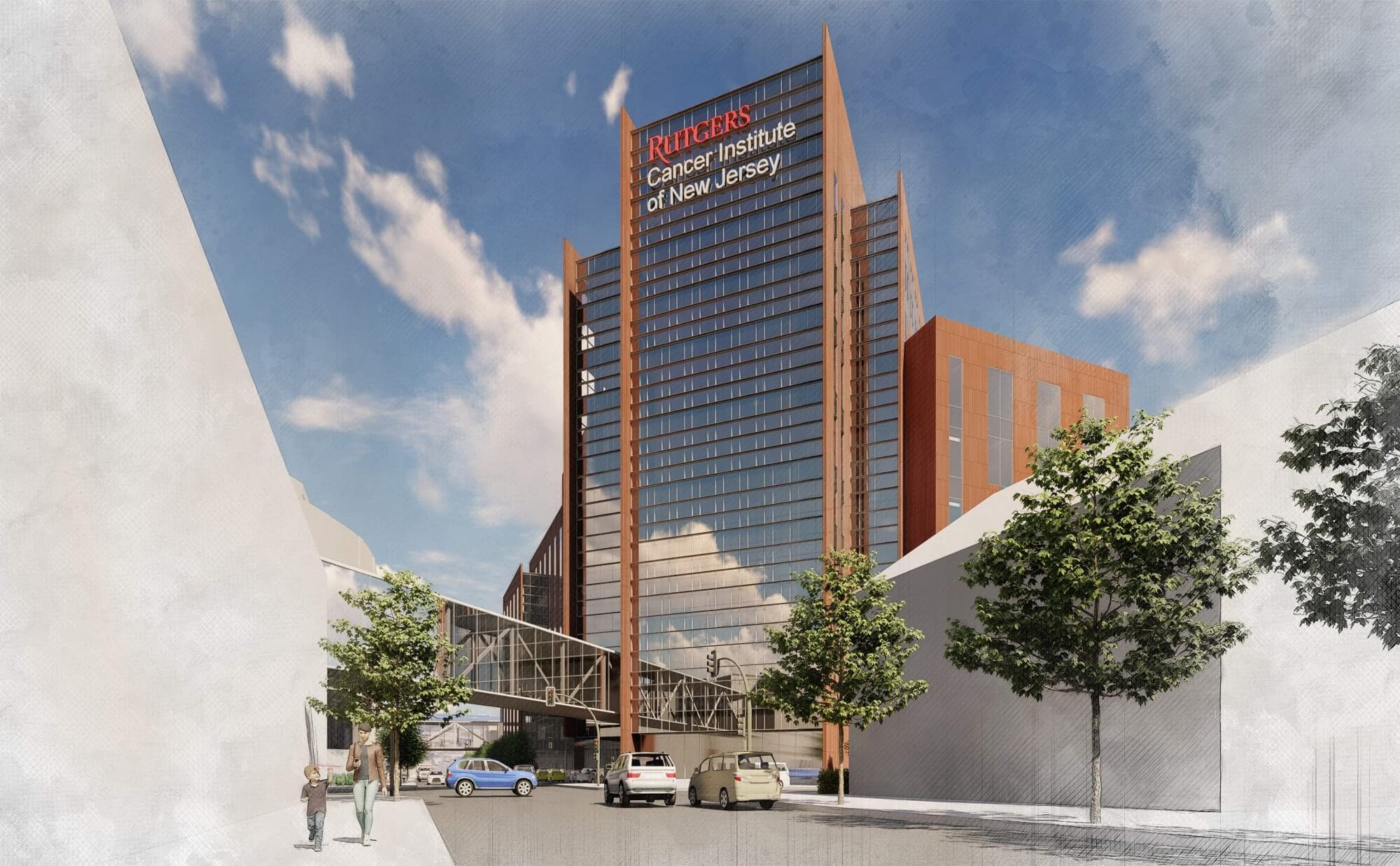Paladino envisions Rutgers’ Cancer Pavilion as ‘next level’ in treatment

“Cancer can’t wait.”
It’s one of the sayings you’ll hear around the Rutgers Cancer Institute of New Jersey’s new Cancer Pavilion — a 12-story, 510,000-square-foot, $750 million building on Somerset Street in New Brunswick situated across from the existing center to create a place for cancer treatment that organizers feel will be unrivaled anywhere in the area.
It’s why the demolition of the building on the existing spot could come as early as this summer, a groundbreaking ceremony could be held in the fall and a ribbon-cutting by the end of 2023.
At least, that’s the hope of developer Chris Paladino, the president of the New Brunswick Development Corp. and the visionary for so much of the city.
“It’s really going to be the next level of cancer treatment,” Paladino told ROI-NJ.
The first public hearing on the project comes Wednesday morning. Paladino is confident everyone will like what they hear about the Cancer Pavilion.
Starting in the basement.
Paladino says the 120,000-square-foot basement says a lot about the project. For starters, all of the radiation treatments will be done below ground, which will produce a huge cost savings because the center will not need to install shielding.
In addition, all deliveries will go to the basement, which means the residential area around the building on Somerset Street will not be overwhelmed with beeping trucks and crowded roadways.
Next door, in the basement of a new parking garage, will be a Central Utility Plant — which will enable the center to produce 97% of its own energy needs and go off the grid.
It only gets better above ground, Paladino said.
The 50,000-square-foot floor plates will make everything more convenient, he said.
“It allows us to put things where they need to be, as opposed to having people constantly at elevators,” he said.
The Cancer Pavilion’s design, Paladino said, is all about the patient experience.
“Everything was done with the idea of, ‘How do we destress people and make this as easy as possible for patients when they show up and when they leave?’” he said.
That includes having an emergency oncology department, where those in the middle of treatment can go if the situation arises.
Overall, the center can be broken down in three ways:
- Outpatient care: There will be 84 infusion bays; 74 exam rooms; advanced radiology, including four linear accelerators; diagnostic equipment; lab and pharmacy facilities; outpatient urgent care; and more;
- Inpatient care: There will be 96 inpatient beds on three floors; dedicated surgical and procedure rooms (up to 11 total); a central sterile processing area; and inpatient support spaces;
- Research: There will be wet lab facilities and equipment necessary to support 10 research teams (with each team comprised of 4-8 members); as well as clinical trial and inpatient support spaces.
The Cancer Pavilion will be a jobs creator, too.
Paladino estimates approximately 1,000 construction jobs, then 500-600 permanent jobs. And local residents will get a chance at many of them, as plans are being put together to create training programs with New Brunswick High School, Middlesex County Academy for Allied Health & Biomedical Sciences, Middlesex County Vocational and Technical Schools, and Middlesex County College.
“This is workforce development,” Paladino said. “We want to begin training people for the jobs that will be here.”
The Cancer Pavilion will do good for more than just those who get treatment.
The new building will replace an existing elementary school. As part of the total package, a new elementary school — one with modern facilities and modern amenities, such as playgrounds, a park and ample parking on a five-acre site — will be built across town.
Paladino said education can’t wait, either.
“We are building a new school in the same school district, actually closer to a majority of the students,” he said. “The city’s getting a $55 million public elementary school in an area where about 600 to 800 units of housing will be built. And it won’t cost taxpayers a penny.”